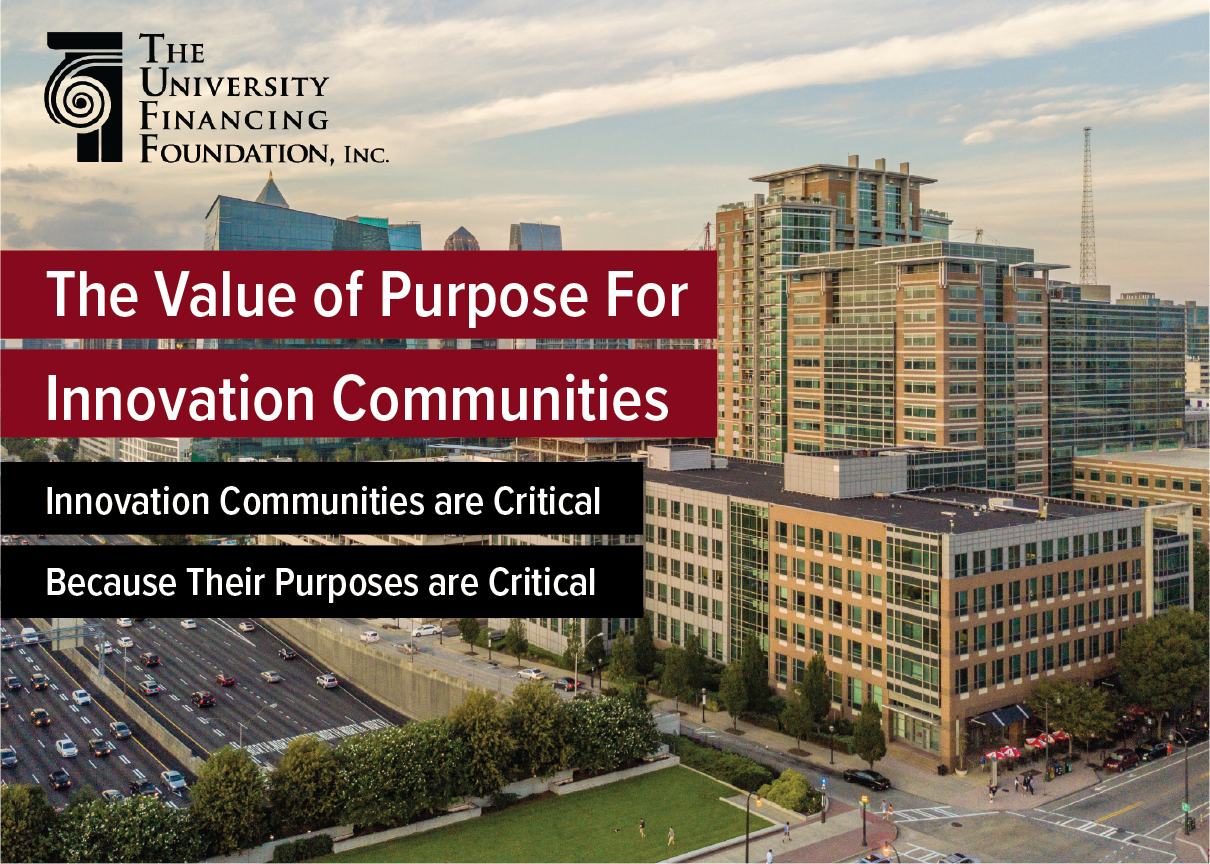During a recent conversation about envisioning an innovation district, we were asked, “If you were going to build a research park in the middle of the desert, what would be your first step?” Our response was to first determine why you want to build a research park in the middle of the desert to begin with. The point of the question was to remove as many location-specific variables as possible and focus on the tenets of a successful district, but the question provided an opportunity for us to magnify the importance of “why.” Successful innovation communities are created with purposeful programming and the real estate development follows.
Purpose should be the first conversation before any stakes are put in the ground. The questions are “what are you trying to achieve” and “why are you trying to achieve this?” Establishing a sense of place goes beyond unified signage and real estate developments. A sense of place calls to something deeper, asking the true purpose behind its existence, and the problems it is trying to solve, based on mission alignment with the anchor institution. Greater recognition and funding, real estate development and expansion of a research enterprise are all results derived from a successful research park, but they are not the purposes behind one. To be successful, there must be a purpose that unites the collaborators within the ecosystem.
Innovation communities are important because of their purpose and for the advancements they make to actively change the world and the environments in which that work occurs. Purpose, and more specifically, mission is what anchors a successful innovation community.
TUFF is one of the original Master Developers of Tech Square at the Georgia Institute of Technology (Georgia Tech). We remain property owners and are also residents and citizens of the district. Therefore, TUFF has been a part of the ecosystem since the very beginning. Tech Square started with an office building, an incubator and space for industry, an electronics applied research lab building, the College of Management, a hotel conference center and an economic development institute.
Today, that vibrant environment has grown exponentially and often is referred to as the center of Georgia Tech. Nearly 30 different industry centers are housed at Tech Square and collaborate with Georgia Tech based on the research that takes place at Tech Square and elsewhere around the city and state. The energy created by Tech Square reverberates through the Southeast and the country. This ecosystem thrives because of the collaboration and innovation that starts at Tech Square and reaches outward. It is for this very reason that this ecosystem was recently labeled “the nucleus of innovation in the Southeast.”
The strategies around the development of Tech Square were to protect the campus’ eastern border and provide more education, incubation and research space. However, the primary purpose of Tech Square was to create a home to increase the competitiveness of enterprises in Georgia through the application of science, technology and innovation. Further, Tech Square helps Georgia Tech fulfill its mission of “improving the human condition.” What started as mission-aligned research and business facilities supporting Georgia Tech, has grown into a massive ecosystem combining organizations and industries across a wide spectrum of academic disciplines. However, they all come together under the unified banner of expanding the reach of Georgia Tech and improving the human condition.
“If you’ve seen one innovation community, you’ve seen one innovation community” is often referenced when defining purpose for research parks. Innovation communities are unique entities that grow from the resources present in their environments and their specific purposes. Each institution has a unique set of competitive strengths, and an innovation community should reflect those strengths. Mission alignment to the specific areas of research of the anchor institution with industry and government collaborators is what makes it a successful innovation community. A unifying purpose and vibrant physical location provide a solid foundation for innovation communities to drive the success of the anchor institution and mission of the community forward.
Join us for the third piece in this series on “The Value of Place.”

